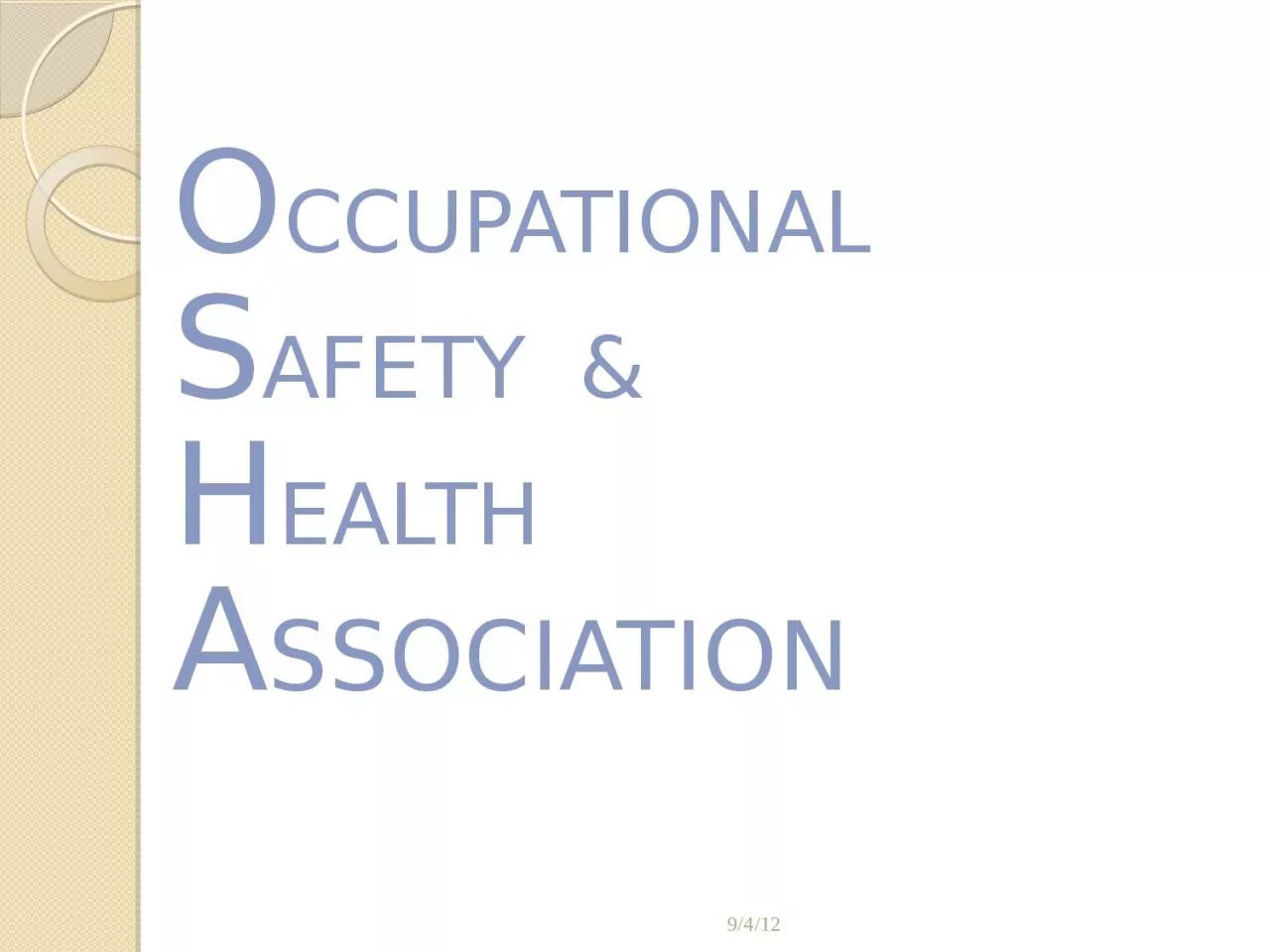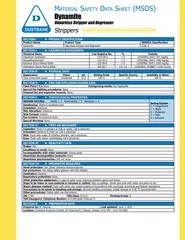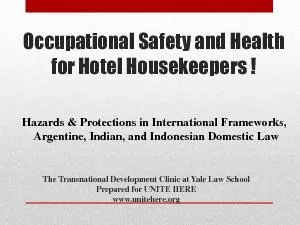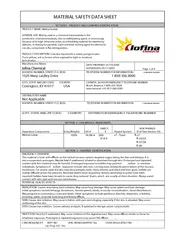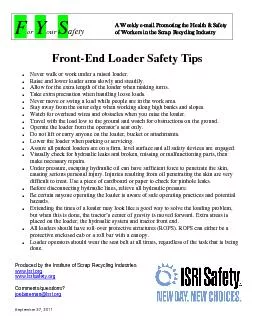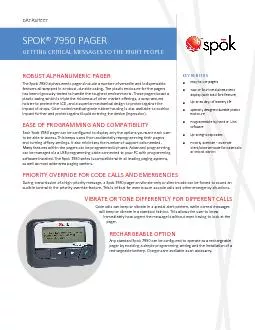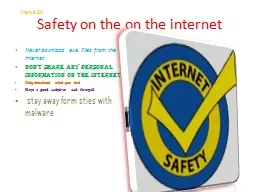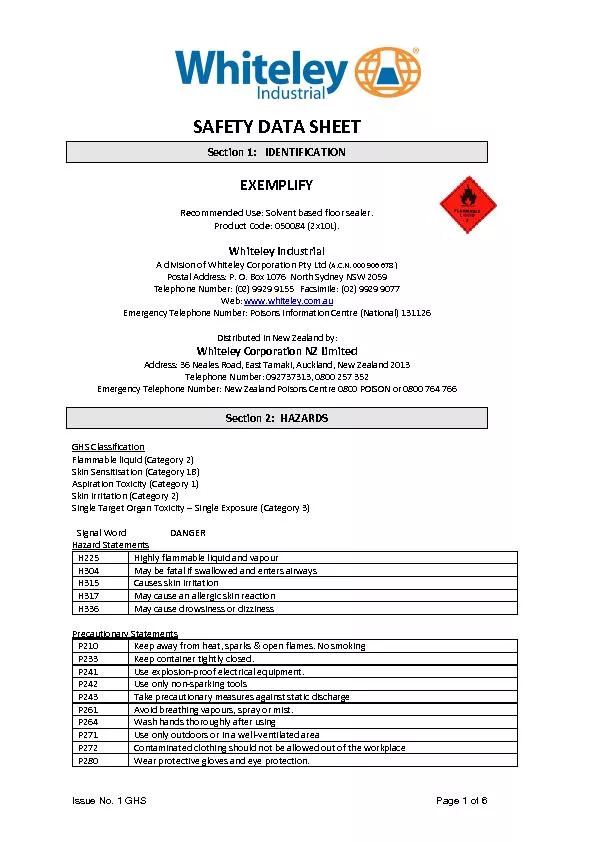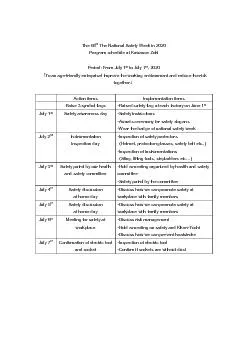PPT-O CCUPATIONAL S AFETY &
Author : singh | Published Date : 2024-03-13
H EALTH A SSOCIATION 9412 1 OSHA History Initial Act Passed by Congress 1970 Amendment Passed by Congress1990 The Purpose of establishing the administration was
Presentation Embed Code
Download Presentation
Download Presentation The PPT/PDF document "O CCUPATIONAL S AFETY &" is the property of its rightful owner. Permission is granted to download and print the materials on this website for personal, non-commercial use only, and to display it on your personal computer provided you do not modify the materials and that you retain all copyright notices contained in the materials. By downloading content from our website, you accept the terms of this agreement.
O CCUPATIONAL S AFETY &: Transcript
H EALTH A SSOCIATION 9412 1 OSHA History Initial Act Passed by Congress 1970 Amendment Passed by Congress1990 The Purpose of establishing the administration was to promote the safety amp health of employees through . Background on STERILE PREPARATION COMPOUNDING Safety General information Stakeholder Collaboration Goals for the summit Disclosure Toxicity Potassium Hydroxide 1310583 15 LD50ORAL RAT 365 mgkg Monoethanolamine 141435 15 LD50ORAL RAT 1400 mgkg Ethylene Glycol Phenyl Ether 122996 15 LD50ORAL RAT 1260 mgkg Diethylene Glycol Phenyl Ether 104687 0510 LD50ORAL RABBIT 2140 mgkg 672157 O for Hotel Housekeepers ! The Transnational Development Clinic at Yale Law School Prepared for UNITE HERE www.unitehere.org Hazards & Protections in International Frameworks, Argentine, Indian, SECION1 - PRDUC AN CMPAN IDNIFICATION in re extinguishers. PRDUT DSCRP Manufacturers Nme: ADDRSS (NMBER STRET, P.O. BOX) 1025 Mry Laidley Dive TELEPHN NMBERFORINORMATION/ cutome service 1-859-356-8 www.isri.org www.isrisafety.org Comments/questions? joebateman@isri.org F or Y our S afety A Weekly e - l th & Safety of Workers in the Scrap Recycling Industry DATASHEET ENTERPRISE ALERT P UBLIC S AFETY T ELEPHONY SOLUTIONS SPOK ver Penetration afety must also be addressed when looking at over penetration concerns when employing the breaching shotgun. Over penetration has been virtually eliminated with the use of dedicated Never download exe. Files from the internet. Don’t share any personal information on the internet. Only download what you trust. Have a good antivirus and firewall. . stay away form sties with malware. 3wrist strap tester o.k.o.k. afety Information Intended Use he 3M I ssue No. 1 GHS Page 1 of 6 S Section 1: IDENTIFICATION EXEMPLIFY Recommended Use: Solvent based floor sealer. Product Code: 050084 (2x10L). Whiteley Industrial A division of Whiteley Corporatio User ManualPLEAE READ THE AFETY AND WARRANTY INFORATION INIDE 95-5015-010-000, Rev. A among offenders with personality disorder . Catriona . Connell, NIHR Clinical Doctoral Research Fellow, University of Warwick. Dr Elizabeth McKay, Reader Occupational Therapy, Brunel University London. T he 93 rd P rogram schedule at Kawanoe Zoki Period: From July 1 st to July 7 th , 2020 「 T o an age - friendly enterprise! Improve the working environment and reduce the risk together 」 A ction BIO INDIAN INSTITUTE OF TECHNOLOGY BOMB AY B IO S AFETY M ANUAL Doc No - IITB/ISM - 04 Rev - 0 Page 2 of 27 Index
Download Document
Here is the link to download the presentation.
"O CCUPATIONAL S AFETY &"The content belongs to its owner. You may download and print it for personal use, without modification, and keep all copyright notices. By downloading, you agree to these terms.
Related Documents

